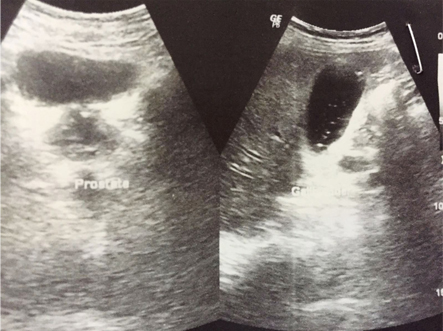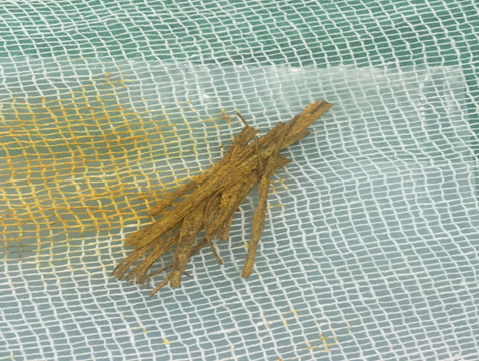Drumstick-An unusual Foreign body in Common Bile Duct
Amaresh Mishra1, Sakti Prasad Sahoo2, Subrat Kumar Mohanty3, Chinmaya Ranjan Behera4
1 Professor, Department of Surgery, KIMS, KIIT University, Bhubaneswar, Odisha, India.
2 Assistant Professor, Department of Surgery, KIMS, KIIT University, Bhubaneswar, Odisha, India.
3 Professor, Department of Surgery, KIMS, KIIT University, Bhubaneswar, Odisha, India.
4 Assistant Professor, Department of Surgery, KIMS, KIIT University, Bhubaneswar, Odisha, India.
NAME, ADDRESS, E-MAIL ID OF THE CORRESPONDING AUTHOR: Dr. Amaresh Mishra, D-17, KIMS Staff Quarters, KIMS, KIIT University, Bhubaneswar-751024, Odisha, India.
E-mail: amareshm26@gmail.com
Obstructive jaundice due to biliary foreign bodies are extremely rare and most of reported cases are due to materials used in the previous surgical procedures. Organic foreign bodies in Common Bile Duct (CBD) are still very rare and here we present a very unusual organic foreign body drumstic in CBD in a 56-year-old man presenting as biliary colic and jaundice. This is the first reported case of organic foreign body drumstick in Common Bile Duct, operated by laparoscopic CBD exploration.
Case Report
A 56-year-old male patient presented to the Department of Surgery, Kalinga Institute of Medical Sciences, Bhubaneswar, Odisha, India, with symptoms of right side abdominal pain which radiated to back for two weeks. Patient also had complains of yellowish discoloration of urine and intermittent vomiting for one week. On evaluation, patient pulse rate was 86/minutes, blood pressure 128/76 mmHg, mild icterus on upper bulbar conjunctiva and tenderness in right hypochondrium. There was no fever or any associated comorbid conditions.
Investigations revealed leucocytosis of 13400/cmm, with neutrophil 85%. Liver function was deranged with total bilirubin 3.5 mg% (direct 2.3 mg %) and alkaline phospatase 385 IU/L. Ultrasonography of abdomen showed chronic cholecystitis with slude ball/soft calculus in the distal CBD which was dilated with mild intrahepatic biliary radicles dilatation [Table/Fig-1]. Magnetic Resonance Cholangiopancreatography (MRCP) was not done due to poor financial condition. With a provisional diagnosis of cholecystitis with choledocholithiasis, we planned laparoscopic cholecystectomy with CBD exploration.
Ultrasonography showing chronic cholecystitis with dilated CBD and sludge ball/Calculus

On laparoscopy, choledochotomy revealed a part of drumstick densely covered with bile concretions and causing CBD obstruction and jaundice [Table/Fig-2]. The drumstic along with the biliary concretions were removed, CBD cleared after normal saline lavage and was closed with a T-tube. Cholecystectomy was completed. Gross examination of the retrieved drumstick revealed staining with bile and few concretions.
Retrieved drumstick with bile concretions

Patient had an uneventful post-operative course, jaundice relieved and was discharged subsequently. T-tube was removed on 21st day and the patient remained symptom free on follow up at three months.
Discussion
Foreign bodies in CBD are very unusual and very rare cause of obstructive jaundice. Most reported cases however, have a history of intervention in the biliary tract previously either by surgery or endoscopic intervention [1]. Surgical sutures, Stents, T-tube fragments are some of the commonly found foreign bodies and also with the incidence of laparoscopic cholecystectomy increasing, foreign bodies like ligaclips have been reported within the biliary tract [2].
The incidence of organic foreign bodies are very rare, with few reported incidence of fish bone [3], chicken [4], tomato skin [5], and coriander leaves [6]. Drumstick in CBD has not been yet described in literature so far. Drumstick is a common vegetable food item in Orissa, but never thought of causing CBD obstruction and jaundice. This is possible due to documented reflux of food into the biliary system. Retrograde migration of fish bones, food material and round worms from duodenum to CBD have been reported [7]. The presence of foreign material within the stones in CBD also suggest possible reflux from duodenum and Prochazka V et al., [8] reported two cases of gallstones caused by foreign material.
Most of the ingested foreign bodies pass through the gastrointestinal tract uneventfully within a week. Particular attention is needed for urgent removal of sharp or pointed foreign body due to the rare risk of perforation or penetration into the adjacent structure. Ingested metal pin from CBD was also reported [9].
Diagnosis is mostly difficult and rather unsuspected. CBD exploration was preferred in this case as single stage procedure for dilated CBD with suspected stone.
Conclusion
Foreign bodies in CBD usually present as obstructive jaundice. Careful history and suspicion may point to the diagnosis. CBD exploration mostly preferred by endoscopic sphicterotomy or by open/laparoscopic method.
[1]. Mansoa A, Martins A, Brito E, Melo M, Clip Migration from Lap. Chola Surg Endosc 2000 14(12):1188-89.10.1007/s04640040030 [Google Scholar] [CrossRef]
[2]. Ahn SI, Lee KY, Kim SJ, Cho EH, Choi SK, Hur YS, Surgical clips found at the hepatic duct after laparoscopic cholecystectomy: a possible case of clip migration Surg Laparosc Endosc Percutan Tech 2005 15(5):279-82.10.1097/01.sle.0000183257.27303.4e [Google Scholar] [CrossRef]
[3]. Kaji H, Asano N, Tamura H, Yuh I, Common bile duct stone caused by a fish bone: a case report Surg Today 2004 34(3):268-71.10.1007/s00595-003-2670-814999543 [Google Scholar] [CrossRef] [PubMed]
[4]. Losanoff J E, Kjossev KT, Chicken bone in the common bile duct Journal of Clinical Gastroenterol 2001 32(5):46310.1097/00004836-200105000-0003111319333 [Google Scholar] [CrossRef] [PubMed]
[5]. Szanto I, Gamal EM, Banai J, Bajtai A, Bozalyi I, Dobo I, Common bile duct stone formation induced by tomato skin following endoscopic sphincterotomy Endoscopy 1994 26(8):71210.1055/s-2007-10090777859689 [Google Scholar] [CrossRef] [PubMed]
[6]. Singh KB, Premkumar B, Sasikumar M, Singh S, Akhtar J, Shankar G, Foreign body in the common bile duct- defying nature- A case report Sri Ramachandra Journal of Medicine September 2006 1(I):43-44. [Google Scholar]
[7]. Kim YH, Kim YJ, Park WK, Lee SK, Kwon JH, Woo SK, Fish bone as a nidus for stone formation in the common bile duct Korean J Radiol 2004 5(3):210-213.10.3348/kjr.2004.5.3.21015467418 [Google Scholar] [CrossRef] [PubMed]
[8]. Prochazka V, Krausova D, Kod’ousek R, Zamecnikova P, Foreign material as a cause of choledocholithiasis Endoscopy 1999 31(5):383-85.10.1055/s-1999-3610433048 [Google Scholar] [CrossRef] [PubMed]
[9]. Dias R, Dharmaratne P, Ingested foreign body in the common bile duct J Indian Assoc Pediatr Surg 2012 17(1):31-32.10.4103/0971-9261.9108522279363 [Google Scholar] [CrossRef] [PubMed]